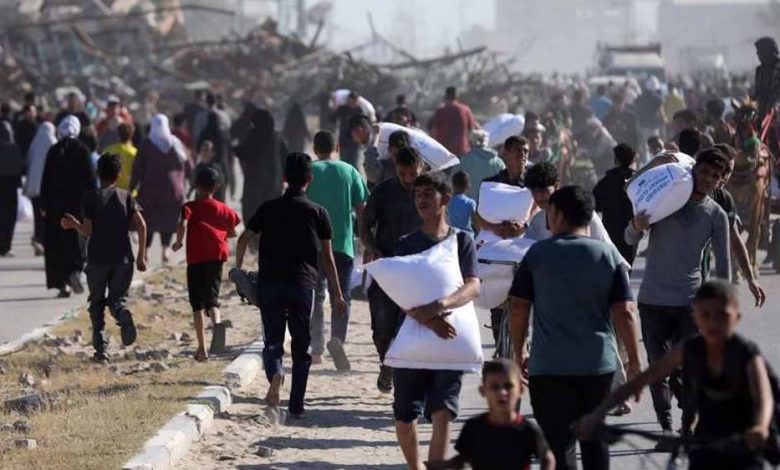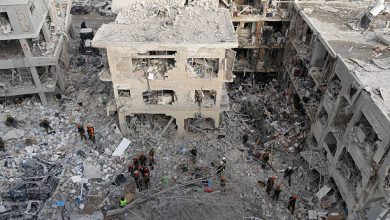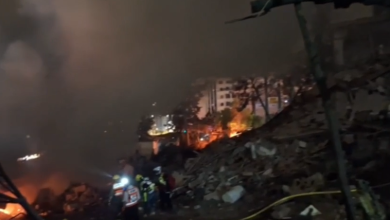UN Chief Urges Investigation Following ‘israeli’ Forces’ Lethal Operations Resulting in 75 Palestinian Deaths over Six Days
Zionist military personnel have once more discharged firearms at Palestinians who were attempting to receive humanitarian assistance from a distribution center in Gaza. This incident has increased the death toll of individuals killed while trying to access food to over 75 within a span of less than six days.

On Monday, UN Secretary-General Antonio Guterres called for an independent inquiry into the recurrent mass shootings of individuals seeking aid in Gaza.
He emphasized the gravity of the situation, stating, “It is unacceptable that Palestinians are risking their lives for food.” He urged for an immediate and independent investigation into these occurrences and demanded that those responsible be held accountable.
The Israeli military has refuted allegations of targeting civilians, asserting that its forces discharged “warning shots” at individuals deemed to “pose a threat.”
The Health Ministry in Gaza reports that Israeli forces fired upon an aid distribution site in Rafah, resulting in the deaths of three Palestinians and injuries to at least 35 others. The site is operated by the US and Gaza Humanitarian Foundation (GHF), which receives support from both Israel and the United States.
According to a report by the ministry, since May 27, at least 75 Palestinians have lost their lives and over 400 have been injured while waiting for food at aid distribution centers managed by GHF.
Al Jazeera has reported that the Israeli military discharged firearms on civilians attempting to obtain food aid, allegedly without issuing a warning, in Deir el-Balah, located in central Gaza.
International aid organizations have widely criticized this pattern, stating that it contributes to the deterioration of civil order while failing to guarantee that humanitarian aid reaches those in dire need.
Reports indicate that Israeli snipers and quadcopter drones are regularly deployed to oversee aid sites operated by GHF.
Monday’s killings occurred just hours following the fatal shooting of at least 35 Palestinians by Israeli forces at two US-Israeli food distribution locations in Rafah and central Gaza.
According to eyewitness accounts and statements from local officials, Israeli forces allegedly fired directly at civilians, targeting their heads and chests.
The Commissioner General of the United Nations Relief and Works Agency for Palestine Refugees (UNRWA) declared on Sunday that the recently set up aid distribution centers in the Gaza Strip have turned into “death traps” for the starving civilians trapped in the blockaded region.
Philippe Lazzarini has voiced strong criticism against the aid delivery and distribution framework implemented by Israel and the United States. He described the system as “humiliating,” forcing thousands of hungry and desperate individuals to trek for miles to severely damaged areas targeted by intense Israeli military bombardments.
He highlighted the necessity for large-scale and secure aid deliveries and distribution, stressing that this can only be achieved through the United Nations, including UNRWA.
Munir al-Barsh, Director General of the Health Ministry in Gaza, has denounced what he describes as the “international silence” in response to the “massacres” affecting the besieged population in the Gaza Strip. He highlighted the critical shortages of medical supplies in the region, warning that these deficiencies are resulting in “dire conditions” within hospitals.
He further stated that 3,000 trucks laden with crucial medical supplies are currently halted at the border, alleging that Israel is “deliberately spreading infectious diseases and epidemics” through its blockade.
The humanitarian situation in Gaza has significantly worsened following the events of March 18, when Israel breached its ceasefire agreement with the resistance group, Hamas.
The UN-backed Integrated Food Security Phase Classification (IPC) has categorized Gaza as experiencing phase 5 famine conditions, placing approximately 71,000 children under the age of five at risk of acute malnutrition.







